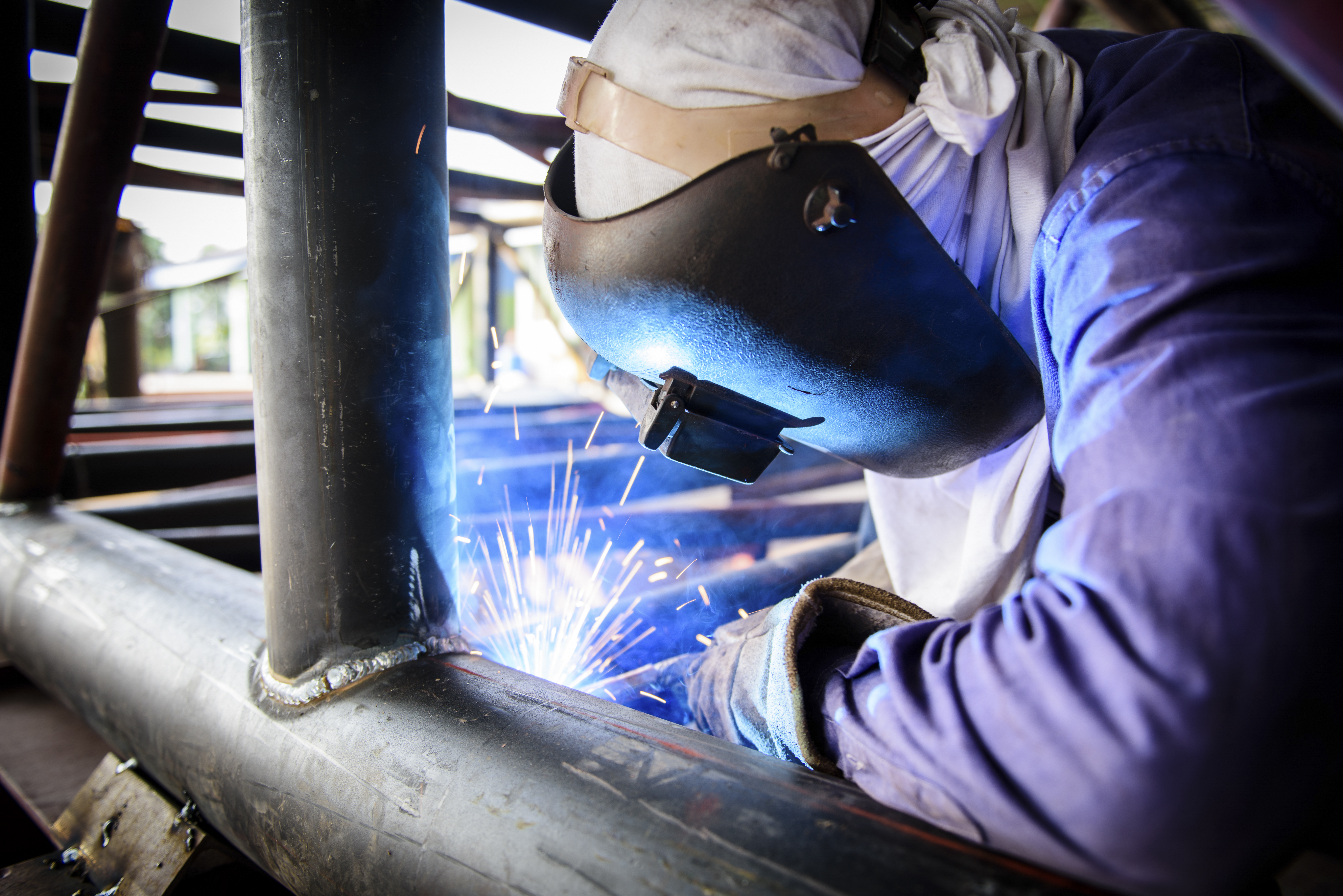Steel fabrication involves a combination of processes.
Thanks to advancements in the industry, steel fabrication is now aided by 3D modelling technology. This has improved accuracy and goes a long way in reducing waste. Although modern technology and software are used, there are still many traditional processes that can be applied to steel. Read on to find out what we can do to steel, and how we can help with your project…
Cutting, folding and bending
One of the steel fabrication services we provide is cutting. During this process, sheets of metal are split into smaller sections. This is particularly useful when custom sizes are required for a project.
Structural steel can also be folded. The folding process involves a complex movement in which the metal is manipulated so that it can be shaped at certain angles. In cases where bending is required, the steel is put through specially designed rollers with a curvature.
Welding
Welding is a process in which two metal parts are joined together with the application of extreme heat along the joint of both metal edges. Although there are a number of other joining methods that can be used, there are a number of benefits to welding. The process achieves an extremely durable bond, as well a flawless seam. The process is very efficient and versatile, which means that it can be used for a broad range of applications.
Punching, machining and shearing
Punching is a process in which holes are formed in a piece of metal with the use of a drill, while machining involves the removal of portions of a piece of metal. During the shearing process, long cuts are made in a piece of metal. During the shearing process, an upper and lower blade are forced past each other and usually one of the blades remains stationary. The process is an accurate way of making straight cuts and can be performed on a range of materials, including stainless steel, mild steel and aluminium, as well as brass and bronze.
Stamping and casting
Stamping is a process in which certain portions of metal are raised. The process, also known as pressing, involves the use of a stamping press. Inside the press, the metal is formed into the desired shape. To ensure accuracy, CAD/CAM engineering technology is used and a 3D model may be used to plan the process.
The casting process involves the pouring of molten metal into a cast in order to make specific shapes. Once the molten metal is poured into the cast, it cools and hardens to form the desired shape. The process is relatively cost effective when compared with a method in which a shape is machined out of a solid piece of metal. There are a number of ways in which metal can be cast, and the method that you choose will depend on the type of metal that you require, as well as the scale of the project.
How can we help?
At BridgeFab, we offer a range of steel fabrication services, including cutting, folding, bending, welding, punching and machining. We also do shearing, stamping, and casting. Our team can handle all aspects of the steel fabrication process, including the drafting, design, fabrication, testing and erection of the steel structure. If you would like to find out more about steel fabrication at BridgeFab, please have a look here.
Besides steel fabrication, we also offer steel processing, 3D detailing, 3D scanning, and erection of steel. To see the full list of services that we offer, please have a look here.
To arrange a consultation with us or to request a quote, please don’t hesitate to get in touch or give us a call on (07) 3373 8777. Our team is available to discuss your specific needs and to address any questions or concerns that you have. We have years of experience in the industry and look forward to helping you achieve excellent results for your particular project.


